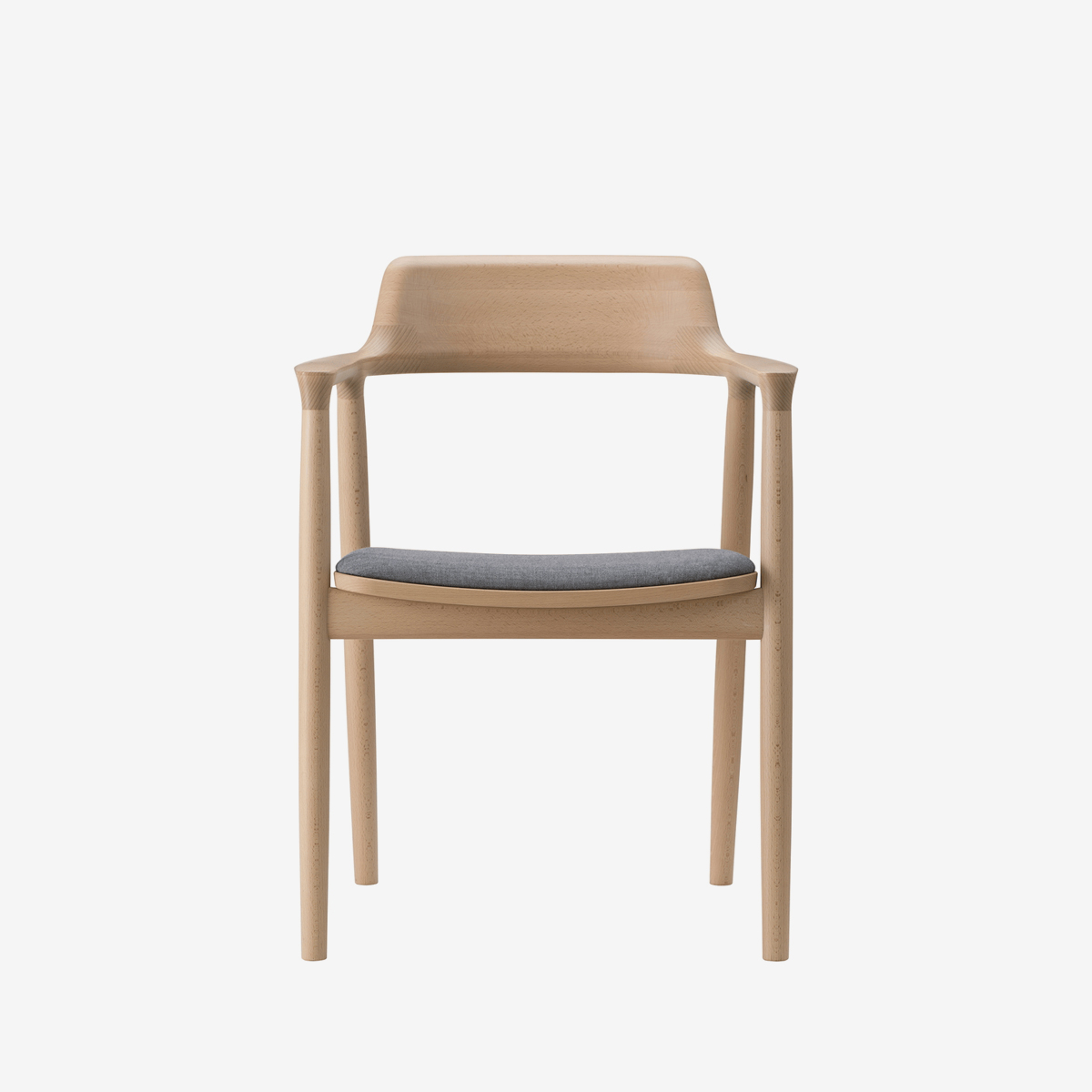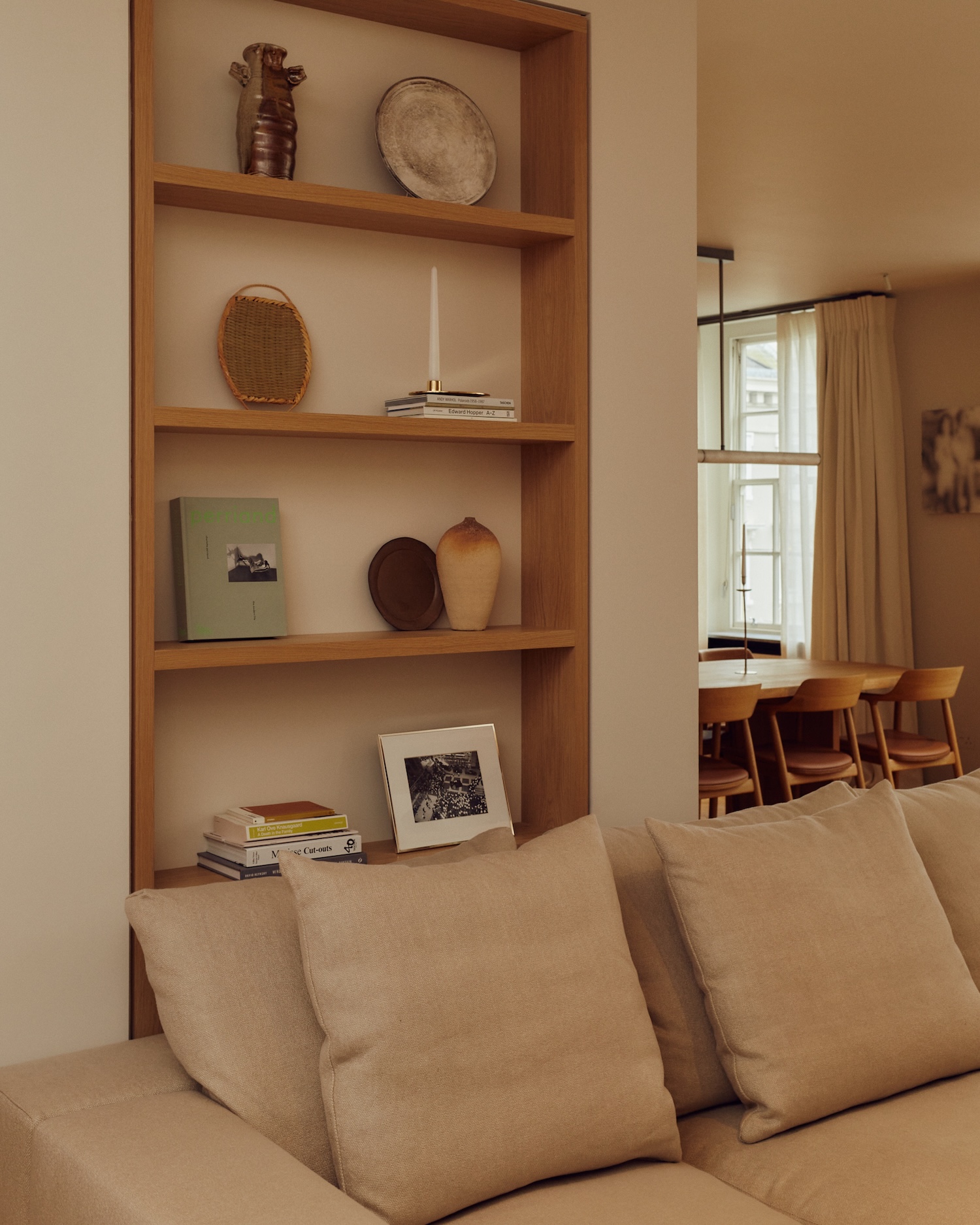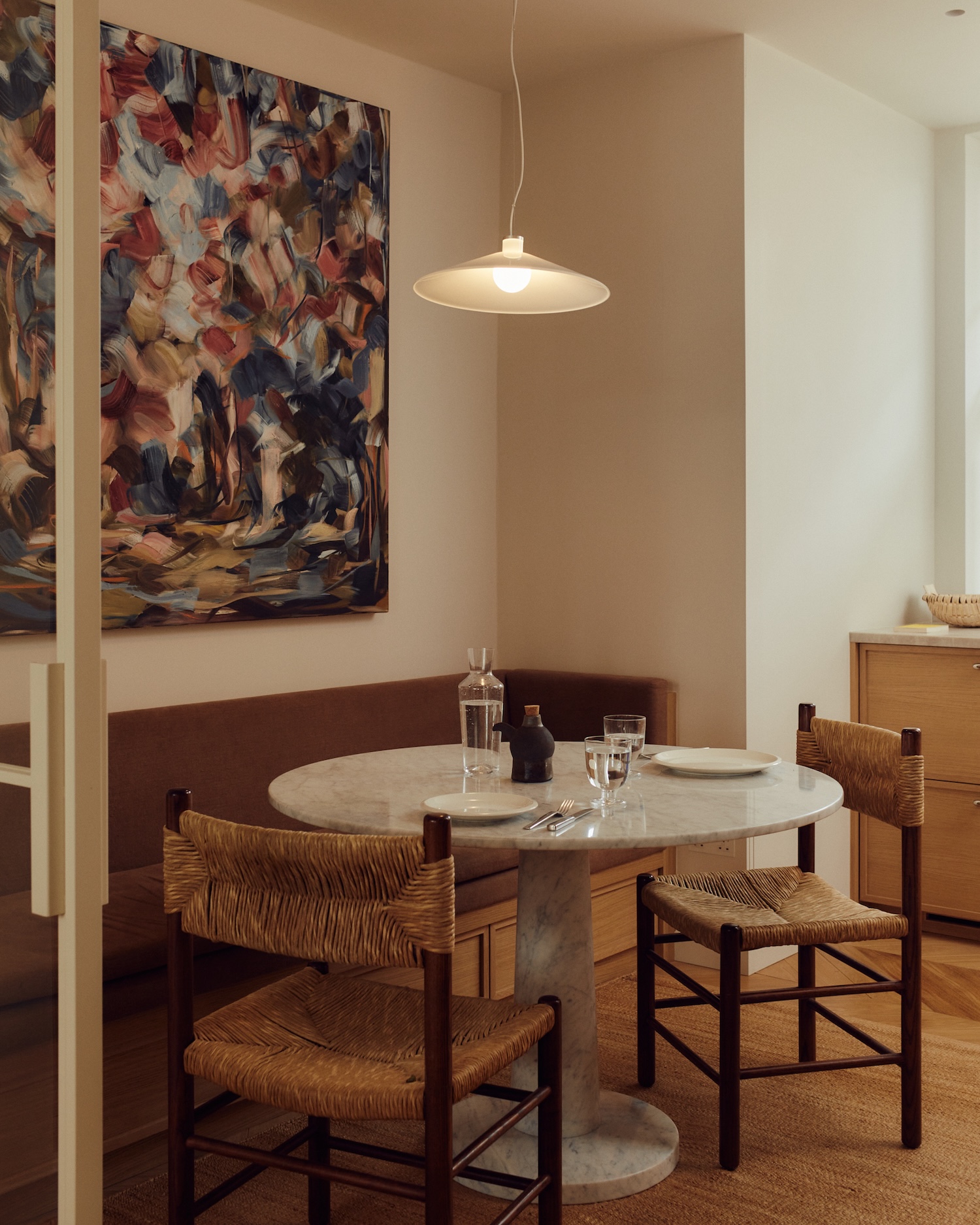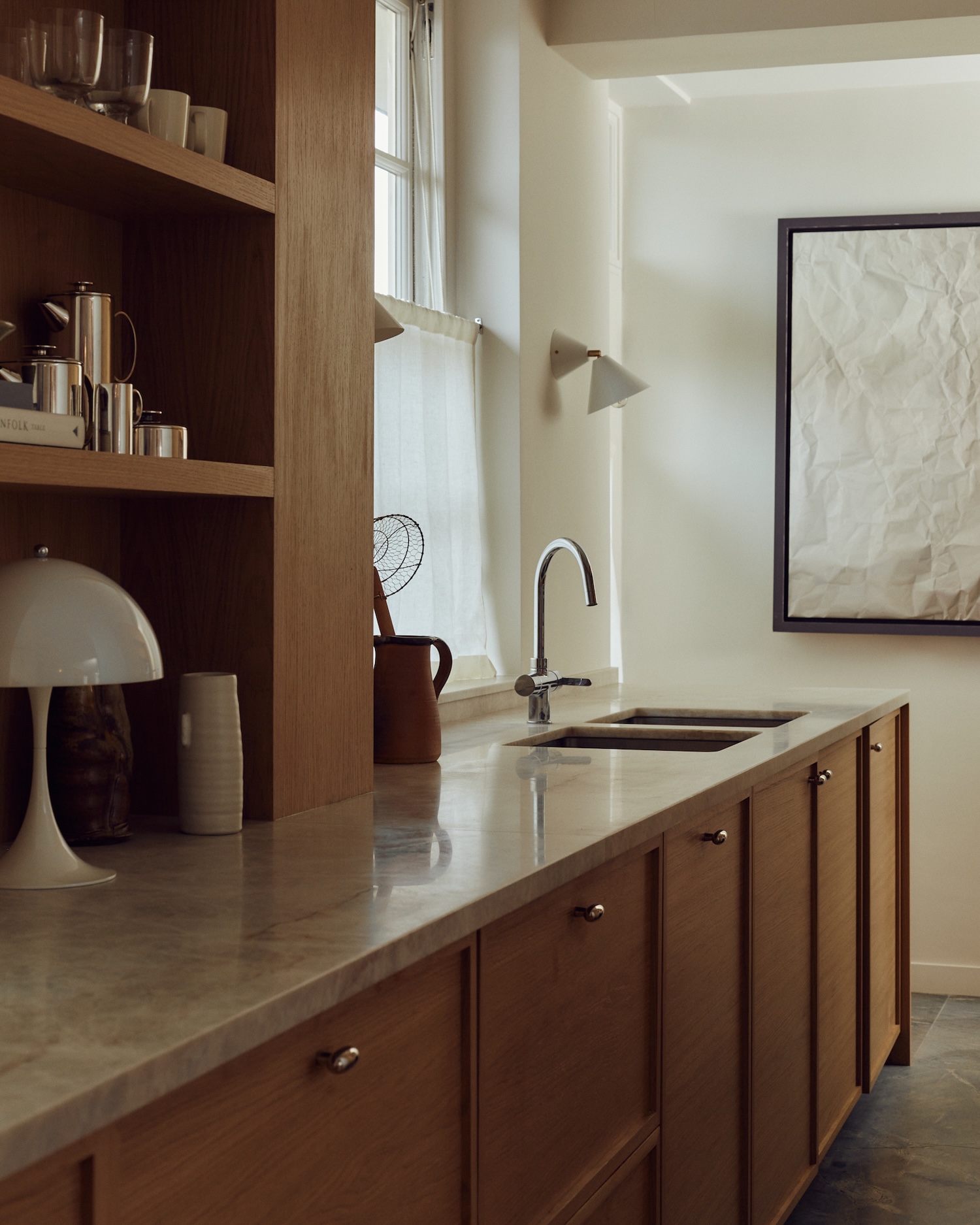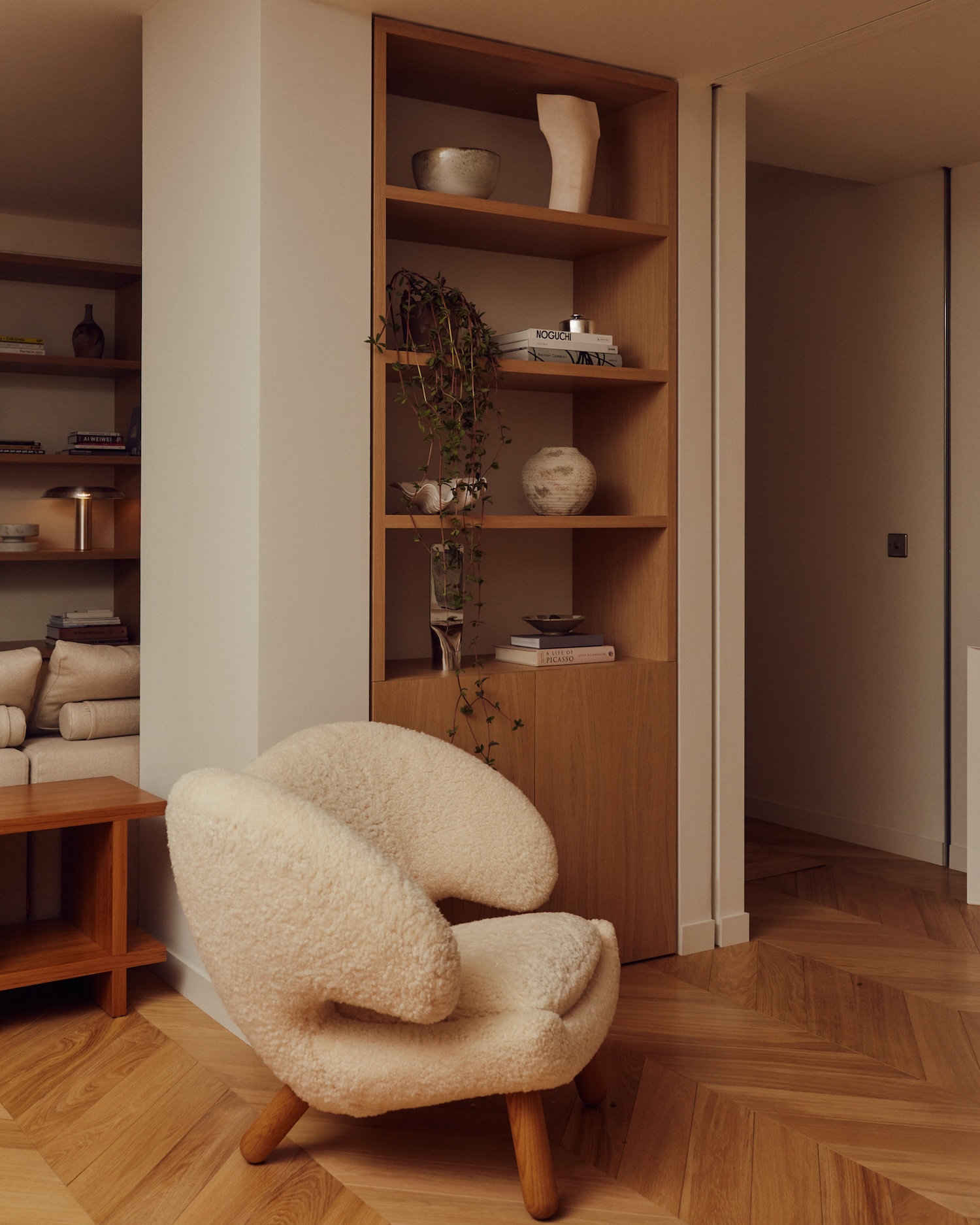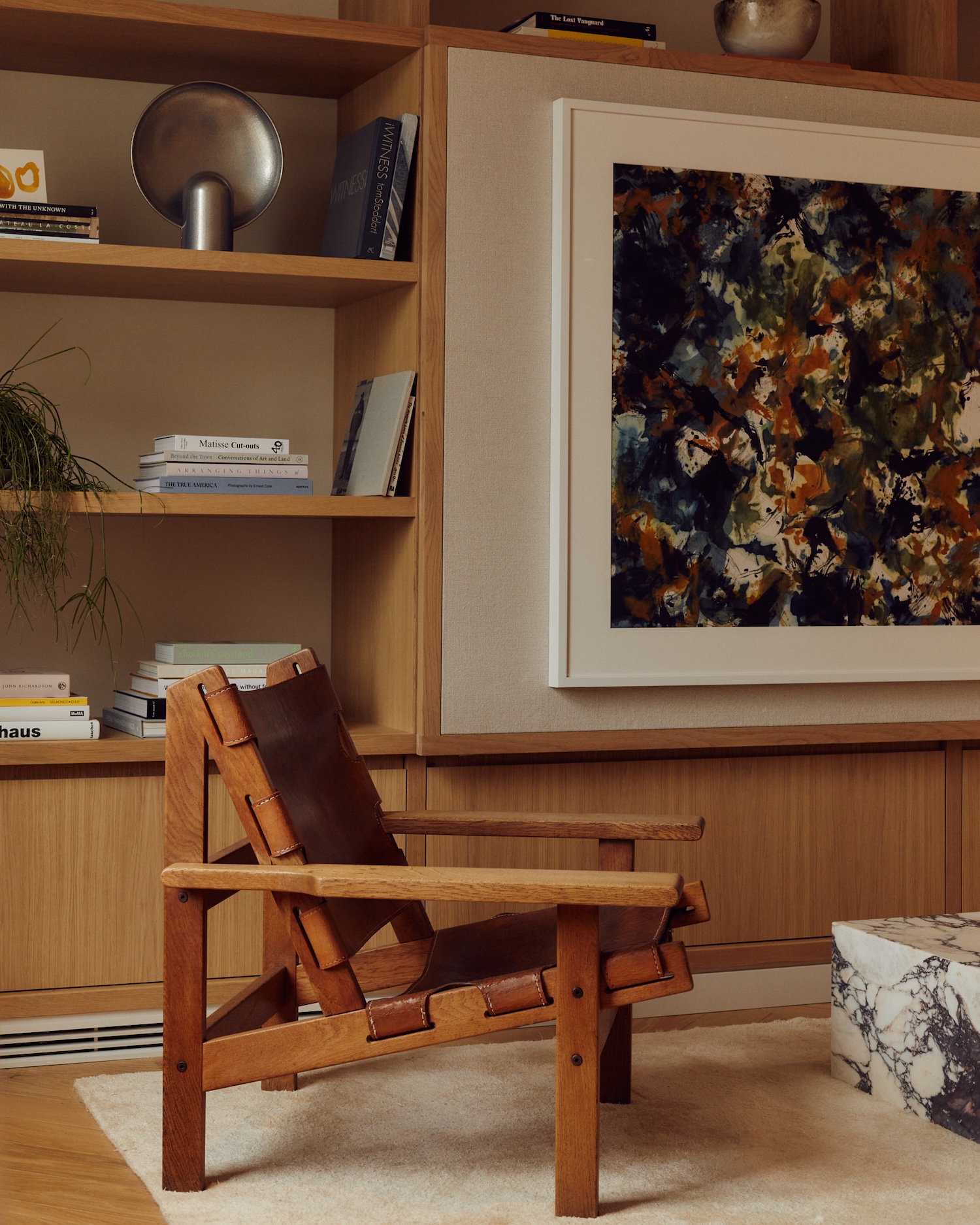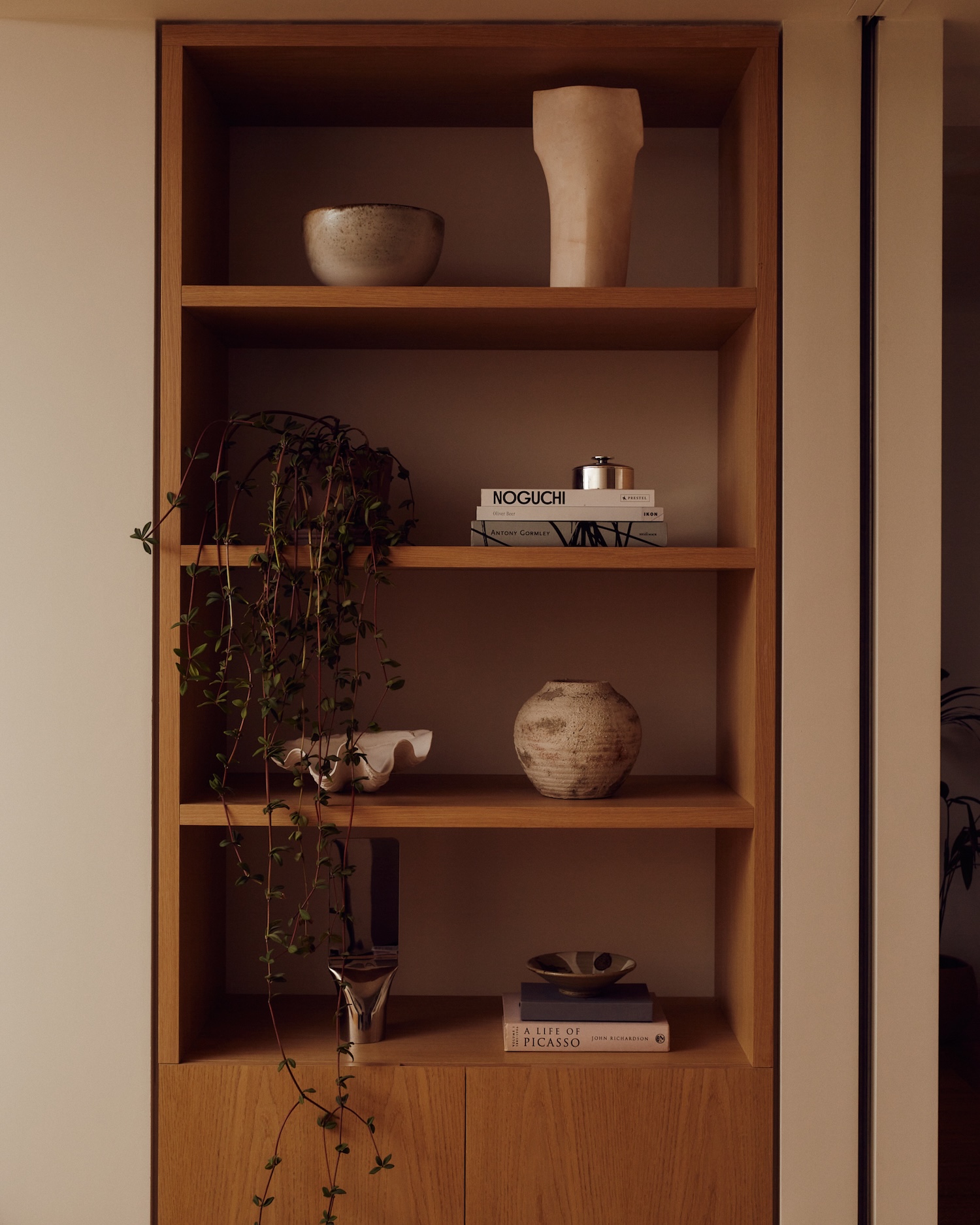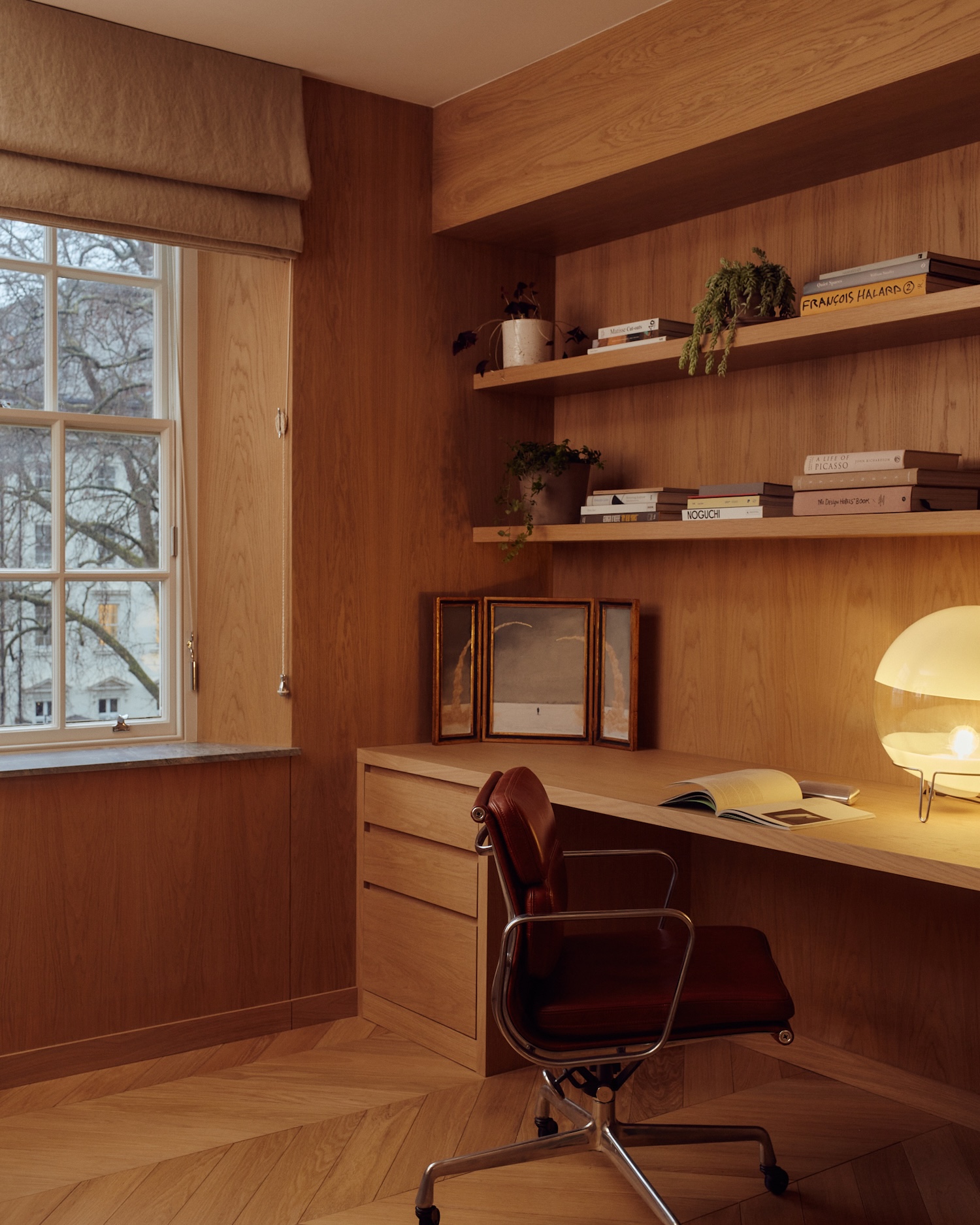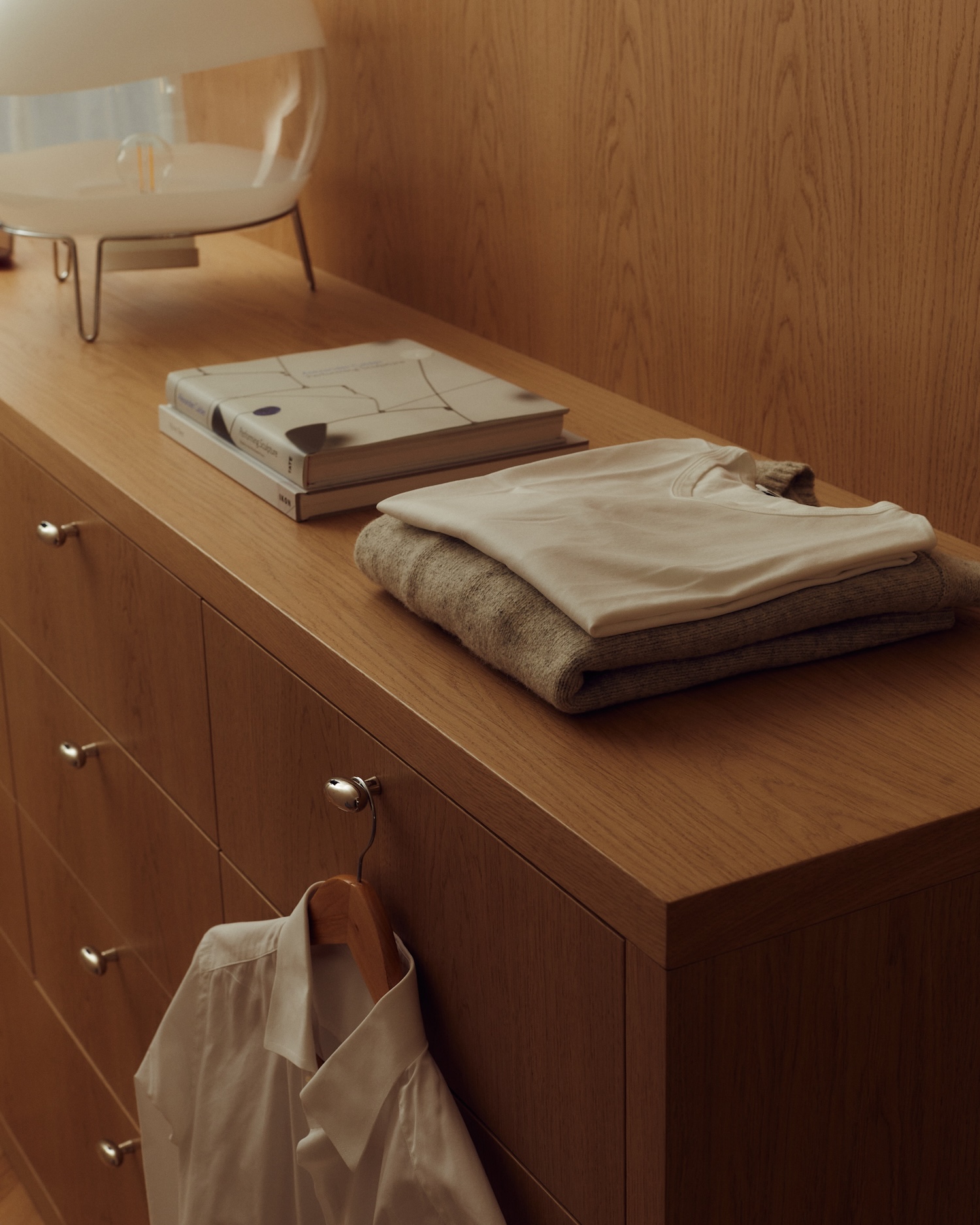Belgravia Apartment is a minimal apartment located in London, United Kingdom, designed by Nice Projects. The project began with what Simone McEwan describes as “a real challenge” – two characterless apartments stripped of their original architectural DNA by previous owners. This tabula rasa condition, while daunting, offered Nice Projects an opportunity to engage with a fundamental question that has animated British interior design since the post-war period: how do we honor architectural heritage while meeting the demands of contemporary living?
The studio’s response was decidedly surgical. Rather than imposing a wholesale aesthetic, they approached the space as archivists and editors, carefully rebuilding the apartment’s architectural sensibility through considered material choices and spatial choreography. The decision to merge the two units into a single dwelling speaks to a broader trend in luxury residential design – the pursuit of expansive, light-filled environments that can accommodate both private contemplation and social gathering.
McEwan’s emphasis on creating “a home that is calm and welcoming, using materials that are warm, tactile, and honest” reflects a sophisticated understanding of how contemporary collectors engage with their environments. The interior operates as what she calls “a backdrop that would showcase the art without overwhelming it” – a philosophy that echoes the gallery-as-home movement pioneered by figures like Peggy Guggenheim and later refined by contemporary collector-designers.
The project’s most compelling innovation lies in its joinery detailing, where Nice Projects demonstrates how traditional craftsmanship can be reimagined for modern functionality. Each custom element – from integrated storage solutions to bespoke shelving systems – reveals the studio’s commitment to what we might call “invisible luxury”: design that performs flawlessly while remaining visually understated.

